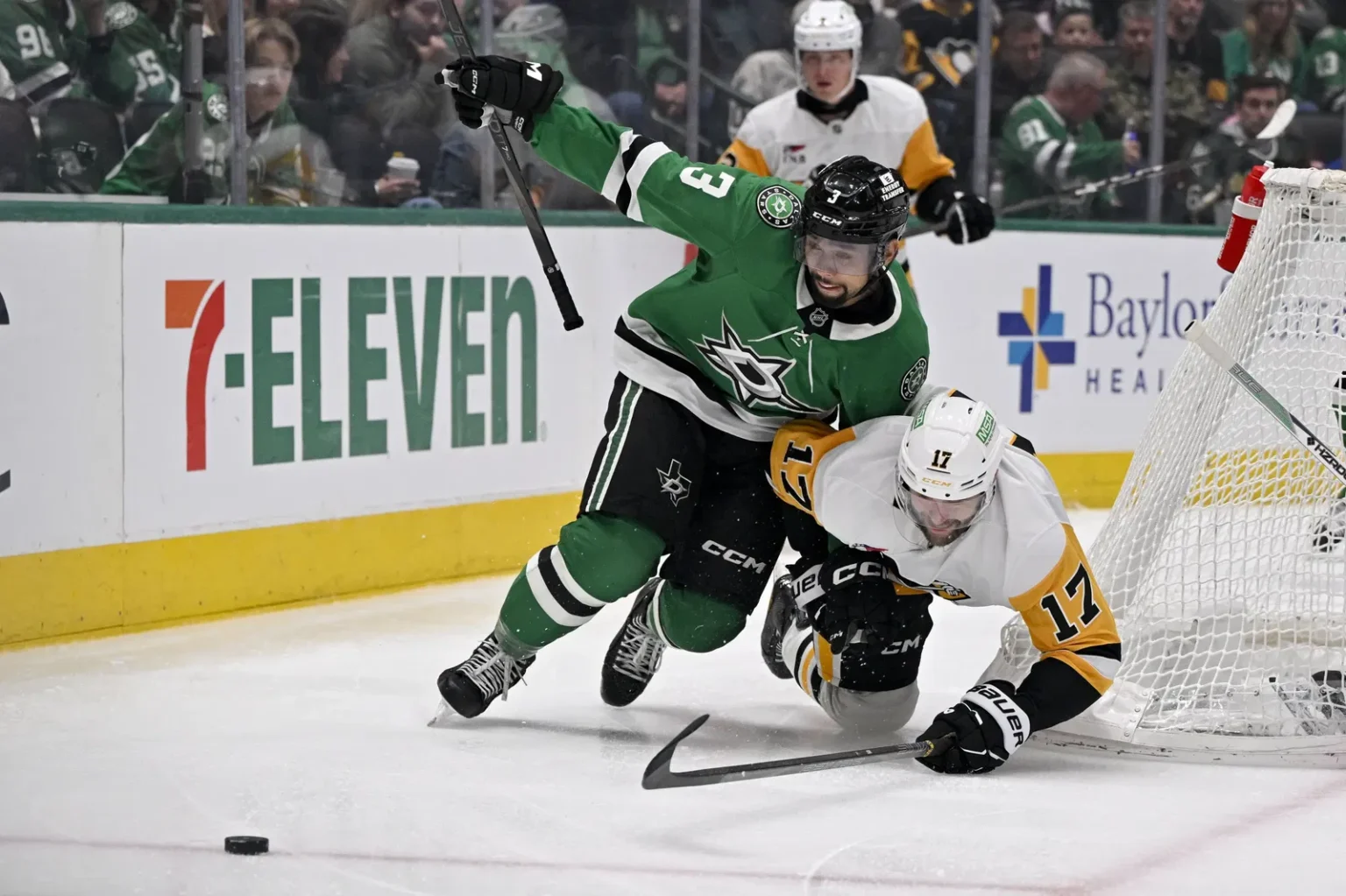The Pittsburgh Penguins weaponized their salary cap space this week.
On Thursday, the Penguins acquired veteran defenseman Matt Dumba and a second-round draft pick in 2028 from the Dallas Stars in exchange for depth blueliner Vladislav Kolyachonok.
The reality of the Stars’ cap situation necessitated this deal, as Dallas was over the cap with Dumba’s $3.75-million cap hit. But after dumping Dumba’s last year of his contract onto Pittsburgh, the Stars have $1.95 million in cap space – enough to eventually add another depth veteran or accrue space ahead of a bigger acquisition during the season.
On Pittsburgh’s end, Penguins GM Kyle Dubas still has about $13 million in cap space after acquiring Dumba. In theory, at least, the Penguins had a roster spot open for a defenseman after veteran Matt Grzelcyk hit the UFA market this summer.
Dumba’s best days are behind him, as he posted only nine assists and 10 points in 63 regular-season games, and in the playoffs, Dumba was a healthy scratch.
Clearly, there was no future in Dallas for Dumba, just one year after signing a two-year contract last summer. Dubas recognized that fact and stepped in to offer cap relief at the cost of a second-rounder – not an insignificant pick by any means.
Given where the Penguins are in their competitive cycle, they could afford to take on Dumba’s contract and give their amateur scouts an additional swing at the plate three years from now. By that point, the Stars may have fallen in the standings, setting up the second-round pick to be relatively high.
Those are exactly the type of deals that other teams like the Penguins can make.
For instance, the Chicago Blackhawks retained $2.5 million of defenseman Seth Jones’ contract in each of the next five seasons when they sent him to the Florida Panthers around the trade deadline. That deal might not have happened otherwise, and they got Spencer Knight and a first-round pick as a result.
Chicago also traded Joe Veleno to the Seattle Kraken for Andre Burakovsky. His $5.5-million cap hit was more than double Veleno’s cap hit, but he scored 37 points this past season, compared to Veleno’s 17.
The Anaheim Ducks used some of their space to eat goaltender Petr Mrazek’s $4.25-million cap hit when sending John Gibson to the Detroit Red Wings. That sweetened the pot in getting a deal done and giving the Ducks a second-round pick in 2027 and a fourth-rounder in 2026.
The Ducks could still weaponize their cap space in case other NHL teams have bloated contracts they want to clear. Anaheim still has about $28.9 million in cap space. Their Pacific Division rival, the San Jose Sharks, have $20.5 million in space after signing Jeff Skinner on Friday and trading for Ryan Reaves on Thursday. Their lineup has started to come into focus, but nothing should stop them from getting more assets by eating a contract as well.
This is how the NHL’s food chain operates in the cap era: different teams are at different points in their competitive trajectories, and not every team needs to spend to the cap ceiling – or anywhere close to it, for that matter. Teams like the Penguins, Ducks, Blackhawks and Sharks can justify absorbing bad contracts when it results in them being able to stockpile picks and prospects to address their long-term needs.
Even as the cap ceiling rises this season and in the foreseeable future, there will always be NHL teams needing to clear space and other squads looking to capitalize on that. It’s the way the system pushes teams, and it’s not going to change anytime soon.
Get the
latest news and trending stories by following The Hockey News on Google News and by
subscribing to The Hockey News newsletter here. And share your thoughts by commenting below
the article on THN.com.
Read the full article here


